Is there life on Mars?
Can humans grow crops on Mars?
Is there Planetary Protection Rights for mars?
Is there Microbial Proof on Mars?
What are the next “steps” for discoveries made on Mars?
Does it rain or snow on Mars?
Is the water found on Mars “salty” like Earth’s oceans?
How much water exists on Mars?
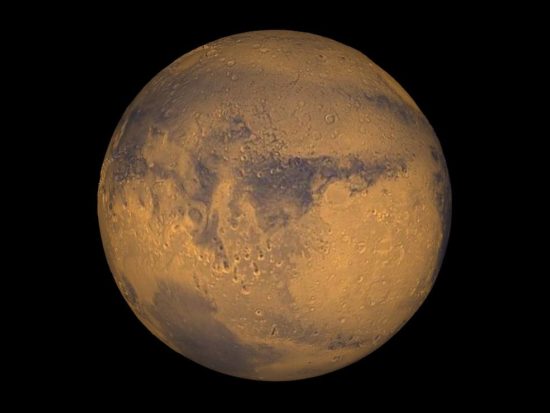
BREAKING NEWS: September 28, 2015
Is there life on Mars? Today, in an exciting news presentation, NASA scientists answered questions to the long anticipated question “Is there life on Mars?” Scientists answered questions to both News outlets and Social Media that indeed, proof of water intermittently flows on the surface of Mars, a discovery that may have ramifications in the search for past or present life on the planet.
I watched the entire NASA presentation this morning and will answer some of the more interesting questions that were answered by NASA representatives and scientists. Unlike the usual formula used on earth to discover the truth (Follow the money), Mars scientist use a formula called “Follow the water. “ To their credit, they have found just that, flowing water.
“Our quest on Mars has been to ‘follow the water,’ in our search for life in the universe, and now we have convincing science that validates what we’ve long suspected,” said John Grunsfeld, astronaut and associate administrator of NASA’s Science Mission Directorate in Washington. “This is a significant development, as it appears to confirm that water — albeit briny — is flowing today on the surface of Mars.”
Why is water so important?
According to an article by How Stuff Works, “Part of the reason is that we’ve never discovered an organism that’s proven otherwise. While some organisms need less than others — the cyanobacteria Chroococcidiopsis, for instance, needs so little water that biologists think it may be able to survive on the arid surface of Mars”
In other words, every organism that we know of needs water to survive. Fact is that without water, life on Earth would have never begun. Science shows us that it is indeed water that facilitated the formation of the planet’s first life forms, possibly even protecting them from the sun’s radiation.
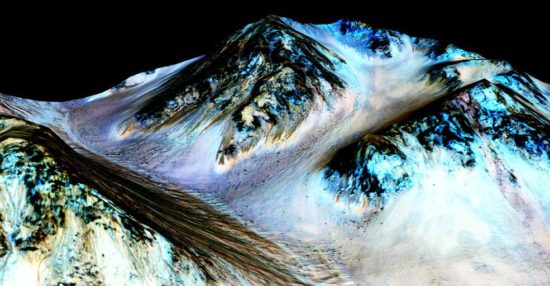
Credits: NASA/JPL/University of Arizona
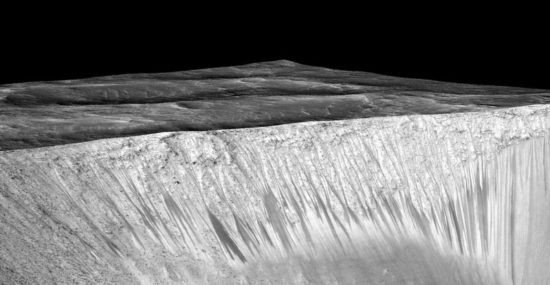
Credits: NASA/JPL/University of Arizona
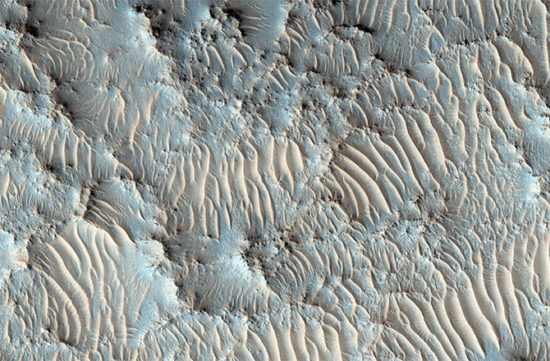
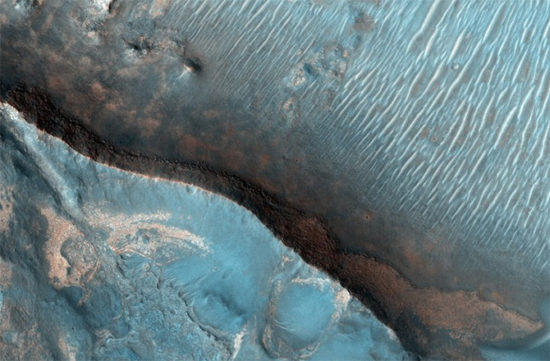
The following video is an animation which simulates a fly-around look at one of the places on Mars where dark streaks advance down slopes during warm seasons, possibly involving liquid water. This site is within Hale Crater. The streaks are roughly the length of a football field.
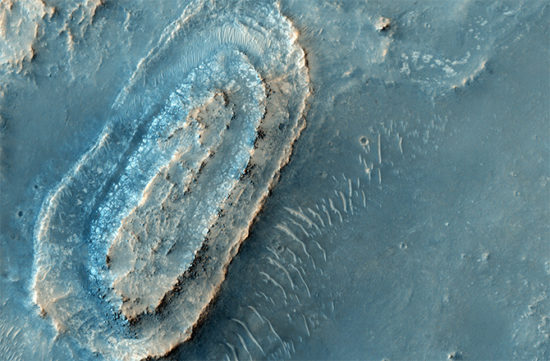
The entire presentation addresses all the questions you may have. The following questions were answered today by NASA:
Is there life on Mars?
Can humans grow crops on Mars?
Are there “Planetary Protection Rights” for mars?
Is there Microbial Proof on Mars?
What are the next “steps” for discoveries made on Mars?
Does it rain or snow on Mars?
Is the water found on Mars “salty” like Earth’s oceans?
How much water exists on Mars?
Watch the presentation now.
In conclusion:
In anticipation of NASA’s ‘mystery announcement’, speculation and comments ramped up on social media sites this past week. Rumors were floating around the internet about the possible discovery of alien beings, and though the idea of life on Mars was discussed today, the word “alien” never came up. However, the idea that flowing water on Mars was indeed confirmed today, the news paves the way for scientists to finally create a budget for future missions to mars, such as Mars 2020.In other words, funding will most likely happen, sooner than later.
*****************************
The mission of the Office of Planetary Protection is to promote the responsible exploration of the solar system by implementing and developing efforts that protect the science, explored environments, and Earth. The objectives of planetary protection are several-fold and include:
- Preserving our ability to study other worlds as they exist in their natural states;
- Avoiding the biological contamination of explored environments that may obscure our ability to find life elsewhere – if it exists; and
- To ensure that we take prudent precautions to protect Earth’s biosphere in case life does exist elsewhere.
To accomplish these goals, the Office of Planetary Protection is involved in many facets of mission development that include assistance in the construction of sterile (or low biological burden) spacecraft, the development of flight plans that protect planetary bodies of interest, the development of plans to protect the Earth from returned extraterrestrial samples, and the formulation and application of space policy as it applies to planetary protection.
It is the aim of Office of Planetary Protection to work in conjunction with solar system mission planners in order to ensure compliance with NASA policy and international agreements. Ultimately, the objective of planetary protection is to support the scientific study of chemical evolution and the origins of life in the solar system.
The strategy for communication of the Office of Planetary Protection is an integral element of program planning and activities; this communication strategy is summarized in the Precis to the Communication Strategy and detailed in the Full Communication Strategy. Accordingly, the Office of Planetary Protection offers several resources for the general public, mission planners, practitioners of planetary protection, and researchers in planetary protection. These resources are provided on the varying pages of this site, and include a course in planetary protection, an overview of planetary protection, references that detail developments and research in planetary protection, historical perspectives of planetary protection, and more.
There are eight co-authors of the Nature Geoscience paper, including Mary Beth Wilhelm at NASA’s Ames Research Center in Moffett Field, California and Georgia Tech; CRISM Principal Investigator Scott Murchie of the Johns Hopkins University Applied Physics Laboratory in Laurel, Maryland; and HiRISE Principal Investigator Alfred McEwen of the University of Arizona Lunar and Planetary Laboratory in Tucson, Arizona. Others are at Georgia Tech, the Southwest Research Institute in Boulder, Colorado, and Laboratoire de Planétologie et Géodynamique in Nantes, France. The agency’s Jet Propulsion Laboratory (JPL) in Pasadena, California manages the Mars Reconnaissance Orbiter Project for NASA’s Science Mission Directorate, Washington. Lockheed Martin built the orbiter and collaborates with JPL to operate it.
More information about NASA’s journey to Mars is available online at:
https://www.nasa.gov/topics/journeytomars
For more information about the Mars Reconnaissance Orbiter, visit:
http://www.theverge.com/2015/9/28/9408645/nasa-mars-water-flow-discovery-proof
http://www.ustream.tv/NASAJPL/theater
http://www.nasa.gov/multimedia/nasatv/index.html#public
http://www.nasa.gov/press-release/nasa-confirms-evidence-that-liquid-water-flows-on-today-s-mars
http://www.cnn.com/2015/09/28/us/mars-nasa-announcement/
http://www.nasa.gov/news/media/info/index.html
http://science.howstuffworks.com/environmental/earth/geophysics/water-vital-to-life.htm


